If your tomatoes aren’t thriving in June, something’s off. This is their moment—sun high, soil warm, and roots ready to explode with growth. And yet, one wrong move and you’re staring at curled leaves, sad stems, or fruit that never shows up. Tomatoes don’t do guesswork. They want what they want, when they want it. That’s where these tips come in—practical, juicy, no-fluff advice to get your plants on track now, while the season’s still on your side. We’ll also throw in a few fertilizing wins so easy, you’ll feel like you’re cheating. Because summer waits for no one, and your tomatoes sure aren’t going to fertilize themselves.
Morning Sunlight Advantage
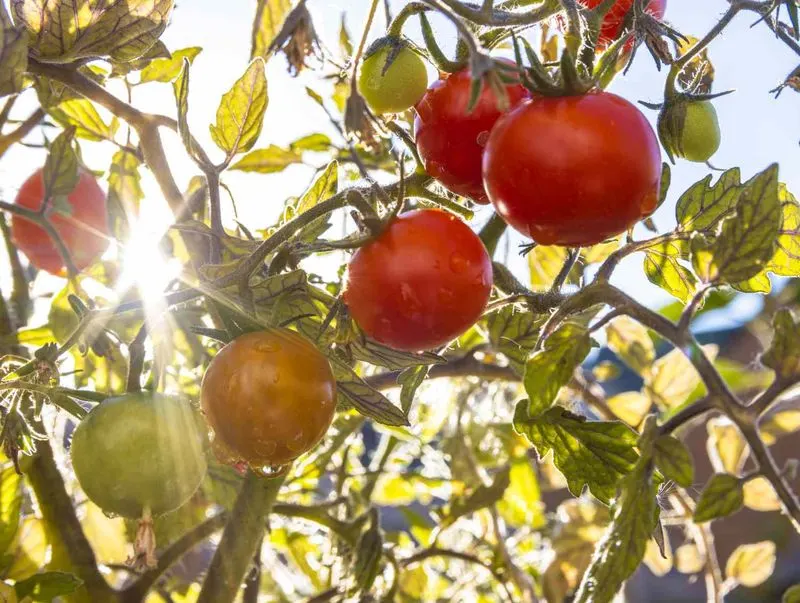
Morning sunlight works wonders for tomato plants. The gentle rays of the early sun provide the energy needed for photosynthesis. This ensures robust growth and vibrant fruit.
Not only does morning light help with growth, but it also dries dew on leaves, reducing disease risk. A healthy plant is less prone to common ailments.
Set your garden in a spot that catches the morning light. This simple tip can transform your tomato yield from average to extraordinary. The power of nature is truly remarkable when harnessed correctly!
Companion Planting with Basil
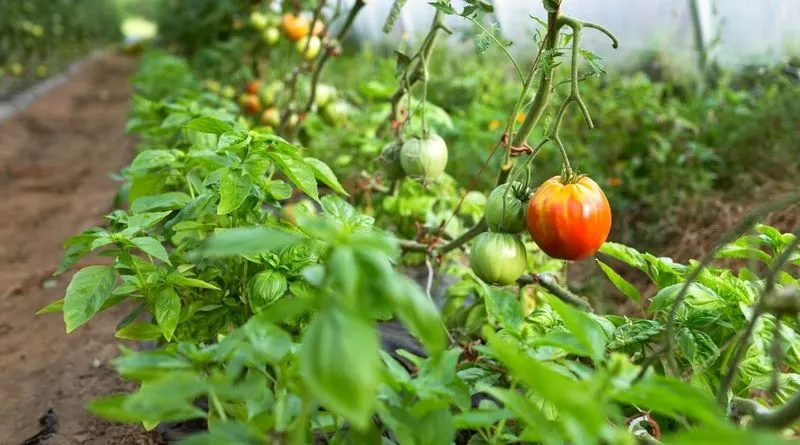
Who knew tomatoes and basil were such good friends? Planting them together enhances flavor and deters pests naturally.
Basil’s strong aroma confuses and deters harmful insects, while tomatoes provide a sturdy structure for basil. This pairing creates a healthy ecosystem in your garden.
For the best results, plant basil around the base of your tomato plants. This symbiotic relationship is a win-win, producing tastier tomatoes and fragrant basil. It’s a match made in gardening heaven!
Epsom Salt Miracle
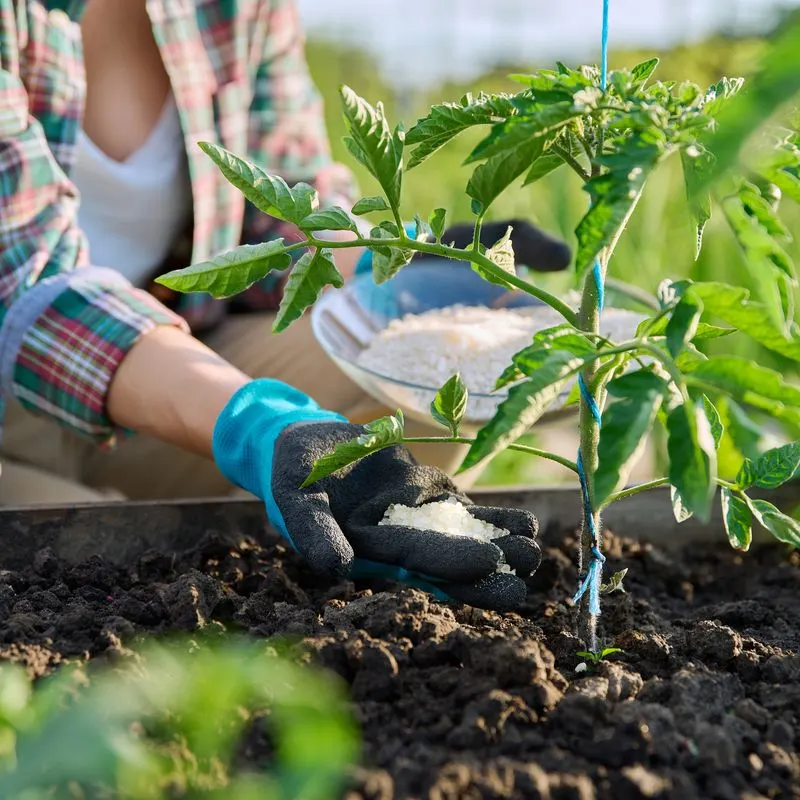
Epsom salt isn’t just for relaxing baths; it’s a gardener’s secret weapon. Rich in magnesium and sulfur, it boosts plant health and leaf color.
Sprinkle a tablespoon around the base of your tomato plants once a month. This simple addition can significantly impact your harvest quality.
Epsom salt helps with nutrient absorption, ensuring your plants receive all essential elements. It’s a cost-effective way to supercharge your gardening efforts. Experience the magic of Epsom salt this summer!
Mulching Magic
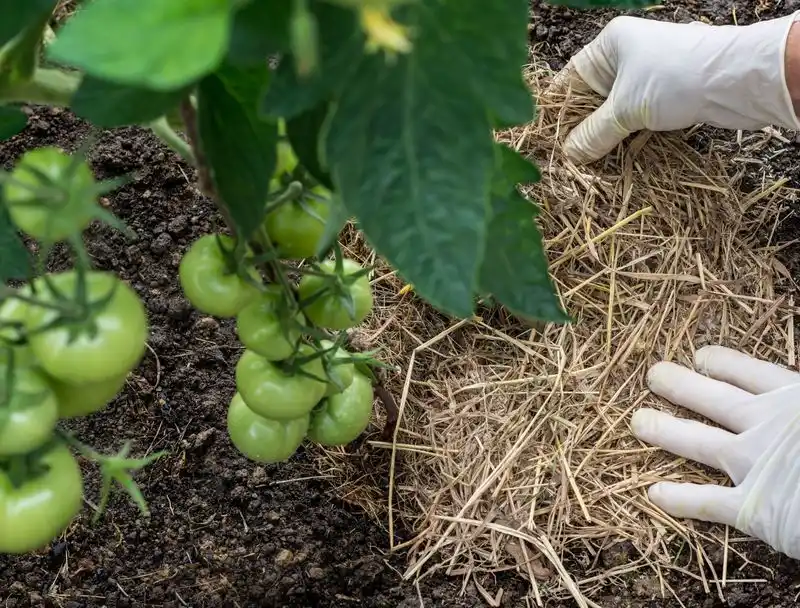
Mulching is a gardener’s best friend. It conserves moisture, controls weeds, and improves soil health.
Apply a 2-3 inch layer of organic mulch around your tomato plants. This technique stabilizes soil temperature and retains essential moisture.
By reducing competition from weeds, your tomatoes have more resources to thrive. Mulching is a simple, effective way to enhance your garden’s productivity. Embrace the magic of mulching for healthier, happier plants!
Pruning for Productivity
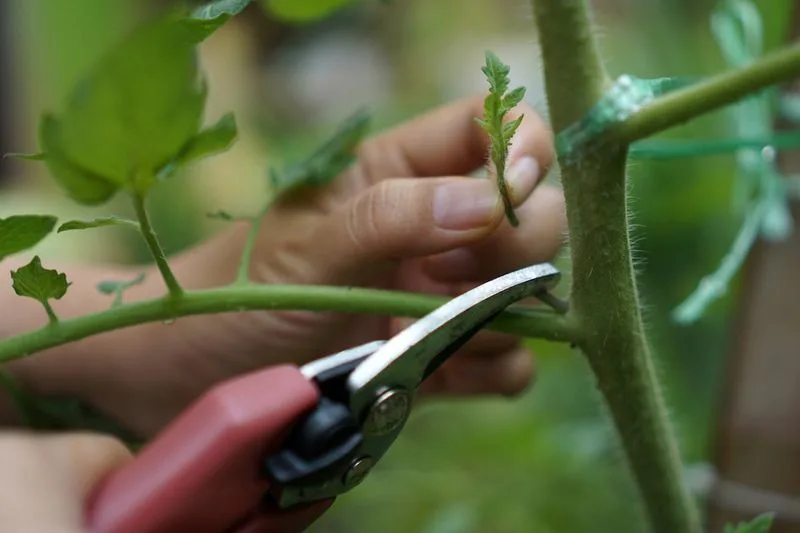
Pruning is essential for maximizing tomato yield. Removing excess foliage directs energy towards fruit production.
Focus on removing suckers, the small shoots that develop between the main stem and branches. This encourages larger, tastier tomatoes.
Pruning also improves air circulation, reducing the risk of diseases. With a little effort, your plants will reward you with a bountiful harvest. Master the art of pruning for a flourishing tomato garden!
Fish Fertilizer Success
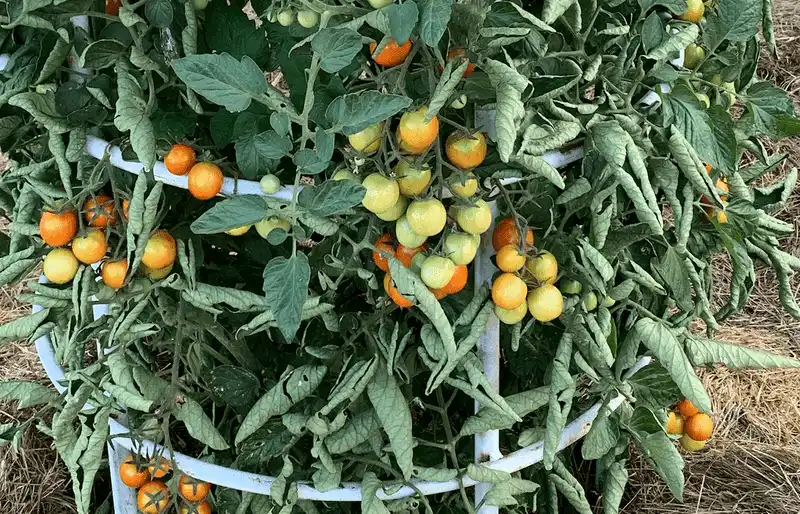
Fish fertilizer is a natural powerhouse for your garden. Packed with nutrients, it promotes robust growth and vibrant plant health.
Apply a diluted fish emulsion to your tomato plants every few weeks. Its rich content of nitrogen, phosphorus, and potassium supports all-around plant development.
Not only does it fertilize, but it also improves soil structure. Embrace the benefits of fish fertilizer and watch your tomatoes thrive with vitality. It’s a simple yet effective way to boost your garden’s success!
Balanced Soil Nutrition

Tomato plants flourish in nutrient-rich soil. A balanced mix of organic matter, compost, and well-aged manure sets the foundation. Begin with a soil test to determine nutrient levels. Adjust the soil’s pH to around 6.0 – 6.8 using lime or sulfur as needed. Providing a robust nutrient base encourages healthy root development.
Incorporate slow-release fertilizers to maintain consistent nourishment. This strategy not only supports lush foliage but also encourages fruit production. By nurturing the soil, you set the stage for a thriving garden, ensuring tomatoes can access the required nutrients throughout the growing season.
Keep soil amendments organic, promoting sustainability.
Consistent Watering Schedule

Establishing a consistent watering schedule is crucial for tomato health. Uneven watering can lead to blossom end rot and splitting. To avoid these issues, water deeply but infrequently to encourage deep root growth. Early morning is the ideal time for watering, minimizing evaporation and disease risk.
Mulching helps retain soil moisture, reducing the frequency of watering. Use straw or shredded leaves as mulch. Tracking environmental conditions and adjusting your schedule ensures plants receive adequate hydration. A moisture meter can assist in monitoring soil dampness, promoting optimal growth conditions and improving overall tomato quality.
Tomato Cage Support

Tomato cages provide essential support for growing plants, preventing branches from breaking under the weight of ripening fruit. Choose sturdy, rust-resistant metal cages for durability, allowing the plant to grow tall and strong. Position cages early in the planting stage to avoid damaging roots later.
Properly supported plants enjoy better air circulation, reducing disease risk. Additionally, cages keep fruit off the ground, minimizing pest contact. This simple method saves space and improves yield quality. With their vertical growth, tomatoes benefit from optimal sun exposure, enhancing flavor and ripeness.
Regular Pest Monitoring
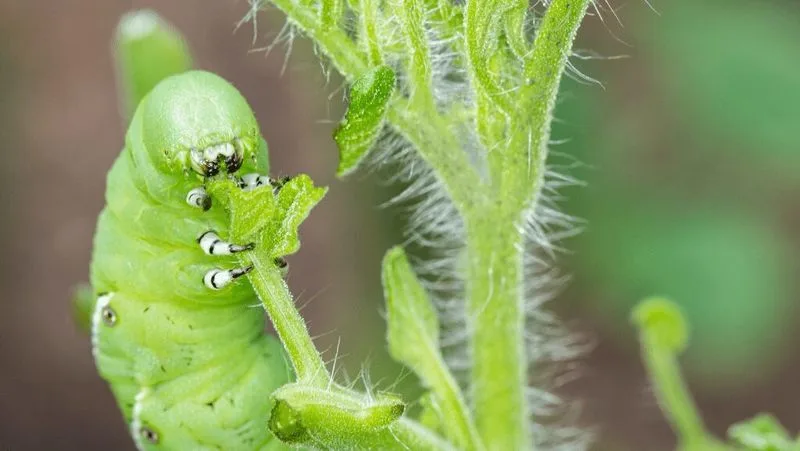
Stay vigilant with regular pest monitoring to protect your tomato plants. Common pests include aphids, hornworms, and spider mites. Early detection is key to managing infestations. Inspect leaves and stems weekly, focusing on the undersides where pests often hide.
Introduce beneficial insects like ladybugs and lacewings to combat pest populations naturally. Organic insecticidal soaps can help control minor outbreaks without harming the environment. Maintaining a healthy ecosystem in your garden encourages natural pest predators. Consistent monitoring and proactive measures safeguard your tomatoes, ensuring they remain healthy and productive.
Crop Rotation Strategy
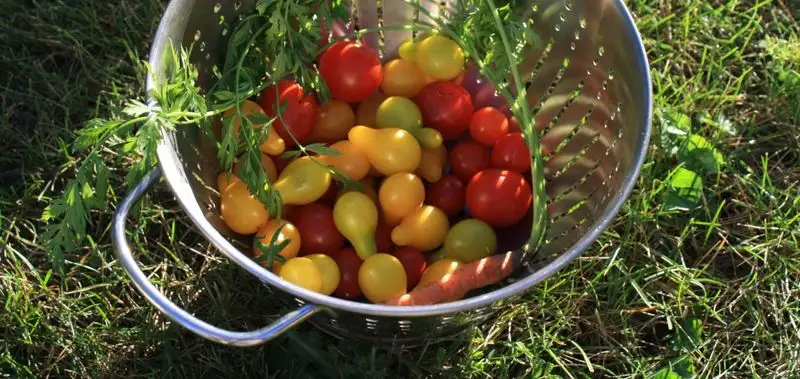
Implementing a crop rotation strategy is vital for sustainable tomato cultivation. Avoid planting tomatoes in the same spot year after year, as this depletes soil nutrients and increases disease risk. Rotate crops with legumes or brassicas to replenish nitrogen levels naturally.
This practice disrupts pest life cycles, reducing infestations over time. A well-planned rotation improves soil structure and fertility, leading to healthier plants. Document your garden layout and changes each season to track rotation success. By rotating crops, you foster a balanced ecosystem, enhancing overall garden resilience and productivity.
Sunlight Optimization
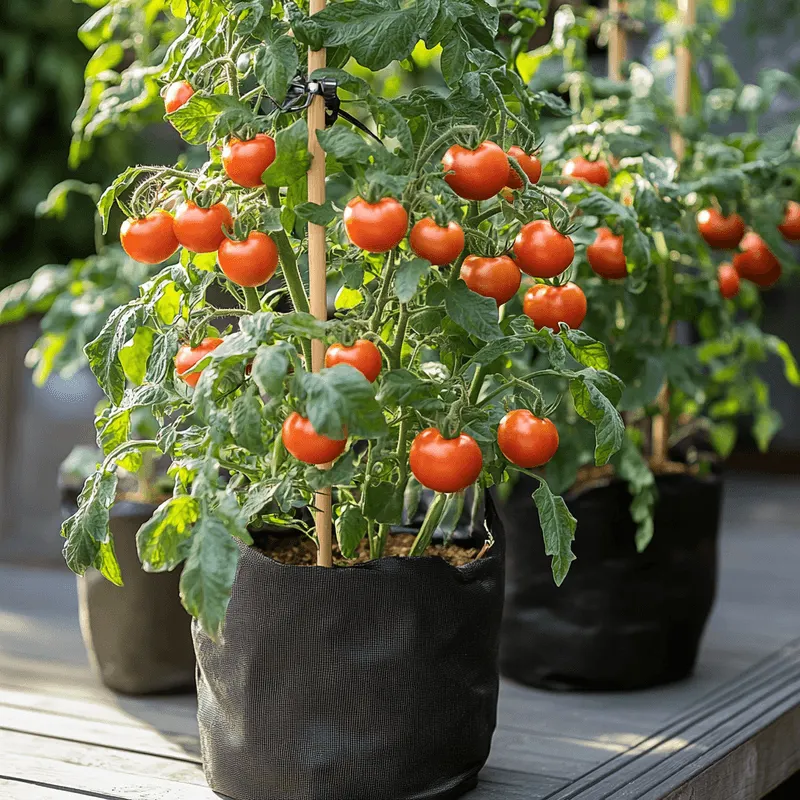
Maximize the benefits of natural sunlight for your tomato plants. Position them in locations that receive at least six to eight hours of direct sunlight daily. Observing the sun’s path helps in strategically placing plants to avoid overshadowing.
Prune excess foliage to enhance light penetration, encouraging vigorous fruit production. Utilize reflective surfaces like white walls or garden mirrors to amplify sunlight exposure. By optimizing sunlight, you improve photosynthesis, leading to robust plant growth and abundant harvests. Adjust plant placements seasonally to maintain optimal light conditions as the sun’s angle changes.
Soil Aeration Technique

Aerate soil regularly to enhance tomato root health. Compacted soil restricts root expansion and reduces nutrient uptake. Use hand cultivators or garden forks to gently loosen soil around plants, improving drainage and aeration.
Incorporating organic matter like composted leaves enhances soil structure. This practice prevents waterlogging and promotes healthy root systems. Aeration is particularly beneficial before planting and after heavy rains. By maintaining loose soil, you support vigorous plant growth and increase resilience against environmental stresses. Frequent soil checks ensure optimal conditions for thriving tomato plants.
Fertilizer Timing Mastery
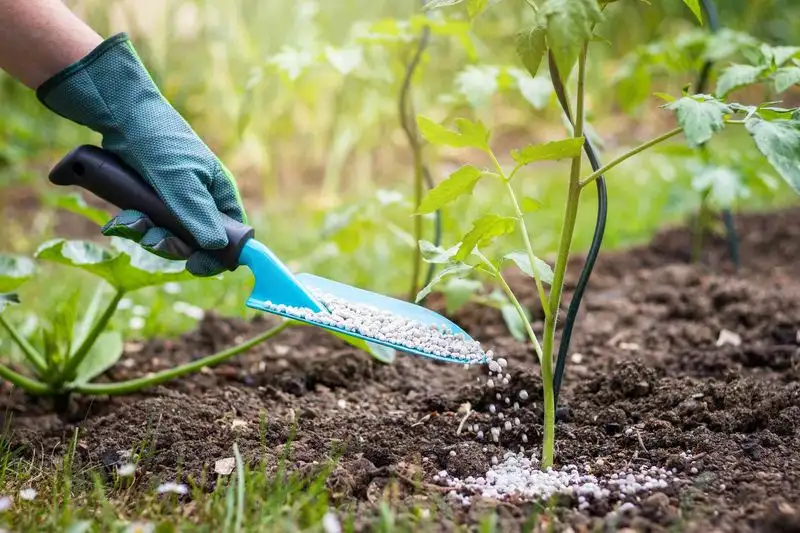
Mastering fertilizer timing is crucial for maximizing tomato yields. Apply balanced fertilizers during key growth stages to boost fruit production. Early application supports root development, while mid-season feedings enhance flowering and fruit set.
Avoid over-fertilizing, which can lead to lush foliage but minimal fruit. Tailor fertilizer types to specific plant needs, considering soil test results. Monitoring plant growth helps fine-tune application schedules. By synchronizing fertilizer timing with plant development, you promote robust health and abundant harvests. Understanding the nutrient demands of your plants leads to informed fertilization practices.
Disease-Resistant Varieties
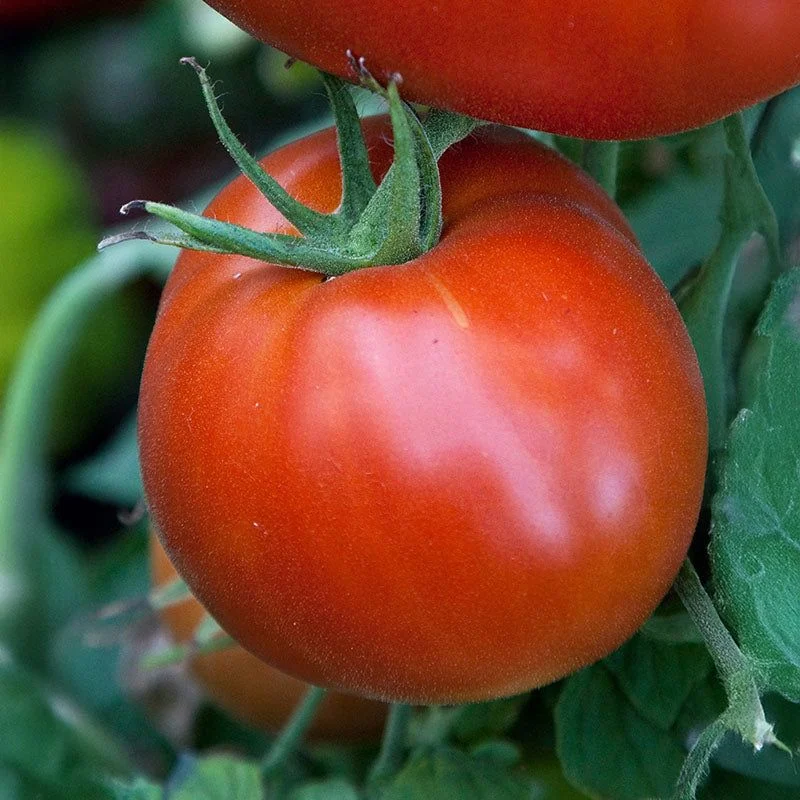
Selecting disease-resistant tomato varieties is a proactive measure against common plant ailments. Varieties like ‘Celebrity’ and ‘Mountain Magic’ offer increased resistance to blights and wilts. Researching seed catalogs aids in choosing suitable cultivars for your region.
Planting resistant varieties reduces the need for chemical treatments, promoting an eco-friendly garden environment. Combine this strategy with proper sanitation practices to minimize disease spread. Rotating crops and maintaining garden hygiene further enhance plant health. Investing in resilient varieties ensures consistent yields and a thriving tomato garden season after season.
Compost Tea Application
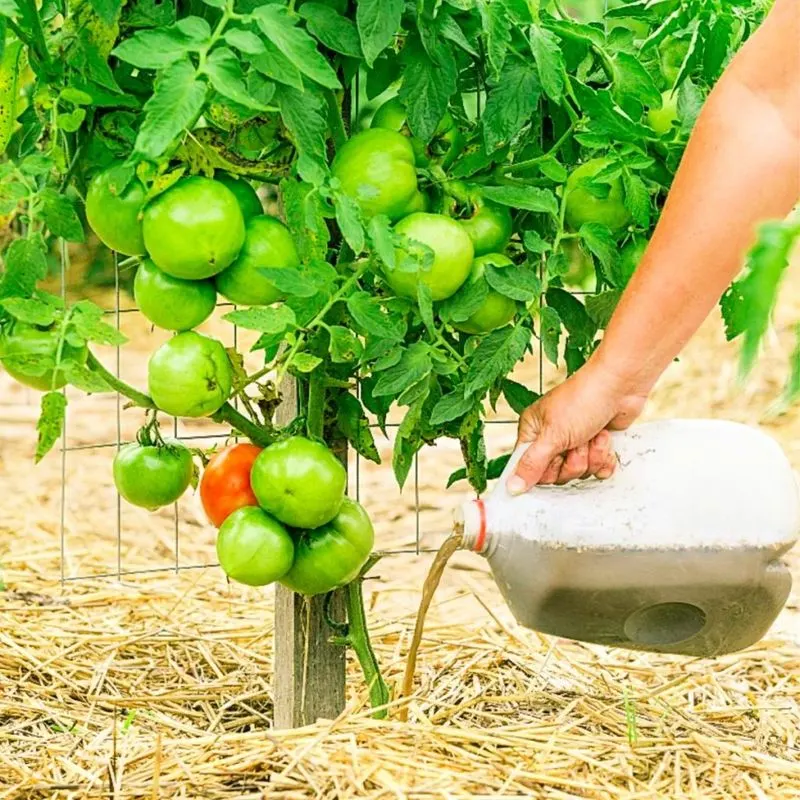
Compost tea offers a nutrient-rich boost for tomato plants. Brewing involves steeping compost in water, extracting beneficial microorganisms. Apply this liquid fertilizer to soil and foliage, enhancing microbial activity and nutrient availability.
Regular applications improve plant vigor and disease resistance. Compost tea serves as a natural alternative to synthetic fertilizers, encouraging sustainable gardening practices. By enriching the soil microbiome, you support healthy root systems and robust growth. Understanding the brewing process and application techniques ensures maximum benefits, fostering a thriving, organic tomato garden.

